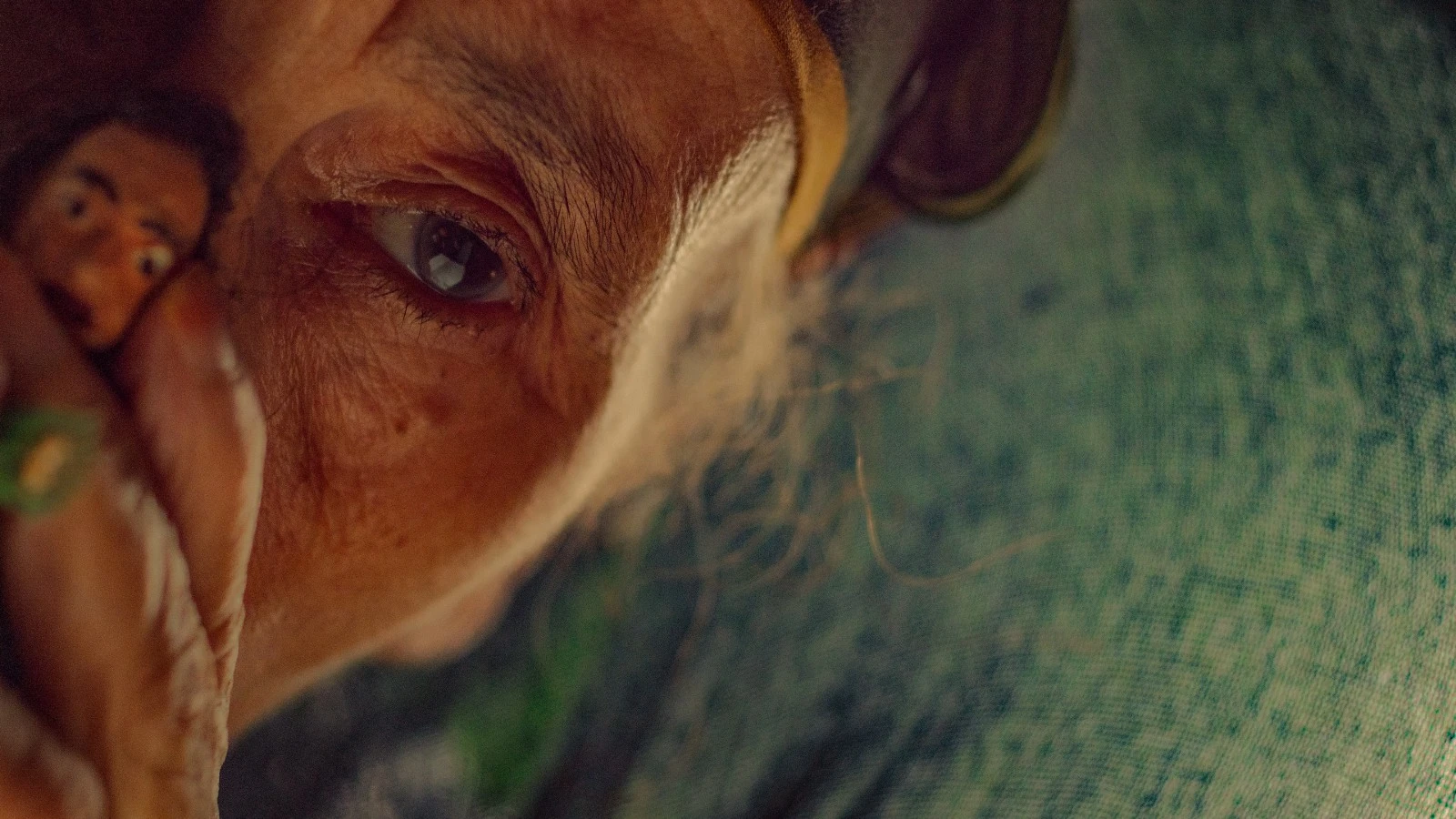The Mother of All Lies screens at the Melbourne International Film Festival on August 6 and 12.
Moroccan filmmaker Asmae El Moudir digs deep into memory through the tactile act of re-enactment to uncover the truth about the Casablanca Bread Riots in 1981 – protests that saw over 600 people killed or imprisoned. Amongst those killed was Fatimah a young girl who lived on the same street as the El Moudir family. Among those imprisoned and arrested were her close neighbours Saïd and Abdallah. Among those who watched and remained silent was her grandmother – a matriarch who exerts iron control over Asmae, her father Mohamed, and her mother.
El Moudir begins the documentary with her fitting a hearing aid for her grandmother. The old woman is uncooperative and pretends it doesn’t work until Asmae asks her “Why don’t you like photographs?” At that moment the woman stares at the camera with disdain. “See, you can hear,” Asmae retorts. Photographs and their connection to tangible reality are central to The Mother of All Lies (Kadib Abyad). There is only one photograph in existence of her street post the Bread riots. Fatimah only exists as a photograph. Asmae’s mother owns a photograph of her daughter as a small child with a group of other school children. Her grandmother refuses to acknowledge Asmae is in the picture at all. In the opening narrative to the documentary Asmae re-enacts one night during Ramadan when she was twelve running through the streets to have her photograph taken at a local shop. She is wearing smudged make-up, in a dress too big for her, and standing in front of the cheap background – a beach in Hawaii.
Like most of the re-enactments in the film Asmae employs dolls that have been painstakingly created by her father and dressed by her mother. The three of them have recreated the street where they lived, the interior of their home and adjoining apartments (where Saïd and Abdallah lived) and a soccer field where her father played which turned out to be the site of a mass grave where the victims of the riot were buried. Mohamed presents his dolls to each of the participants. Abdallah cries when he receives his saying “I should be as dead as this thing.” The old woman recoils and says Mohamed has distorted her. Asmae has two versions of herself – the young girl and the woman she is now – the contemporary version of herself her grandmother calls a “slut.”
An entire microcosm is created in Asmae’s studio where she uses tactile “play” to invoke memory. Abdallah recounts his arrest where he was thrown into a tiny cell in which people died of suffocation. The audience and Asmae, Saïd, and Asmae’s family watch as he tells the story, sweating and crying at the memory. The price of memory is high for those who have suffered trauma, but the cost of forgetting is erasure – erasure that the victims of the riot faced as their bodies were removed from the streets and their homes and lost for over twenty-years. The old woman saw it all, but she refuses to allow it to be spoken of even now. The grandmother has seen everything but wants it wiped away.
There are many ways to make a documentary but Asmae El Moudir’s approach is unique. She is inside and outside the story. She is acting and directing and remaking and remembering. There are similarities to The Wolf House by Joaquín Cociña and Cristóbal León which told through animation the story of Colonia Dignidad, but The Mother of All Lies is as much about Asmae discovering the truth about her own family and their connection to the past as it is about Asmae emerging as a filmmaker.
There is a cost to undercovering the past, especially past atrocities. How culpable have people been in what happened? What is better left unsaid? Asmae El Moudir’s approach is to suggest that a space of freedom to speak must be found but also that “all walls have ears.” As she packs away the tiny world of her past and finds her place in contemporary Morocco there is a sense she has said both too much and perhaps too little. All she can conclude is “Don’t tell my Grandmother, but I am the filmmaker.”
Director: Asmae El Moudir



